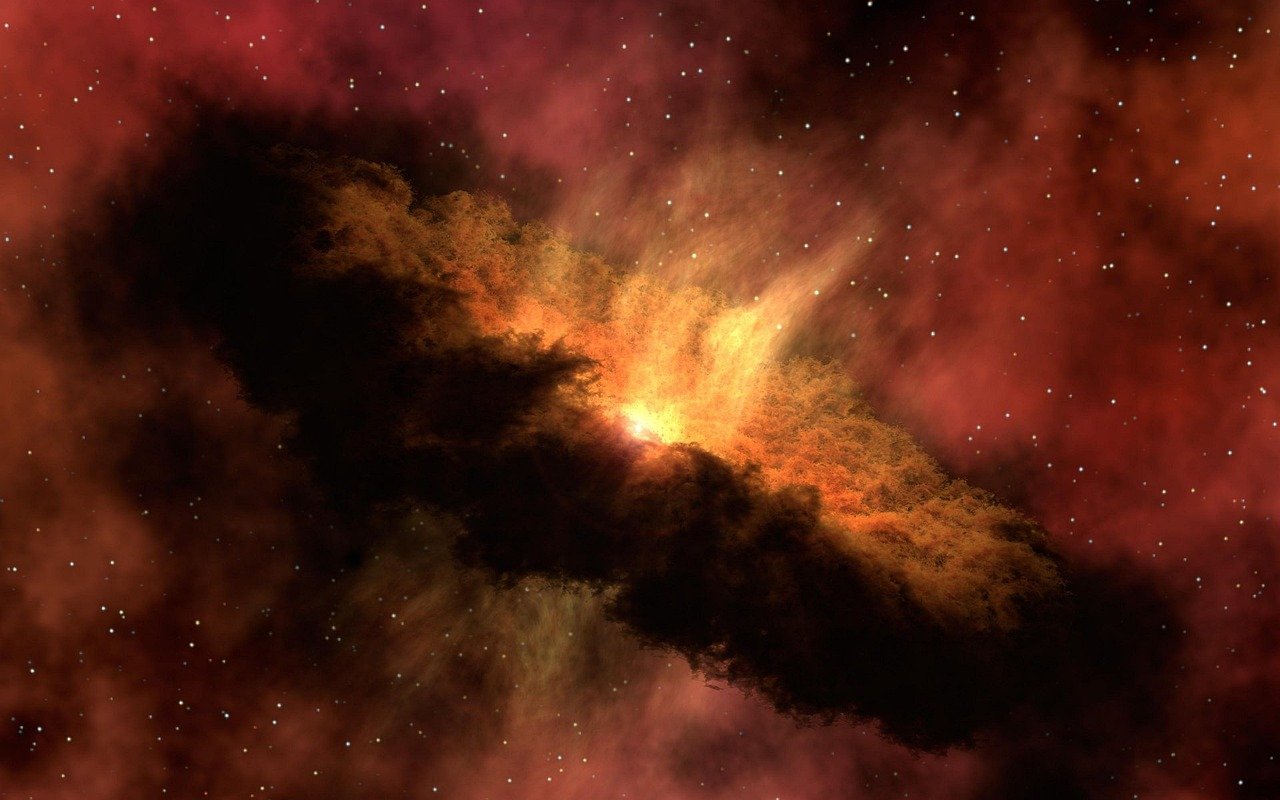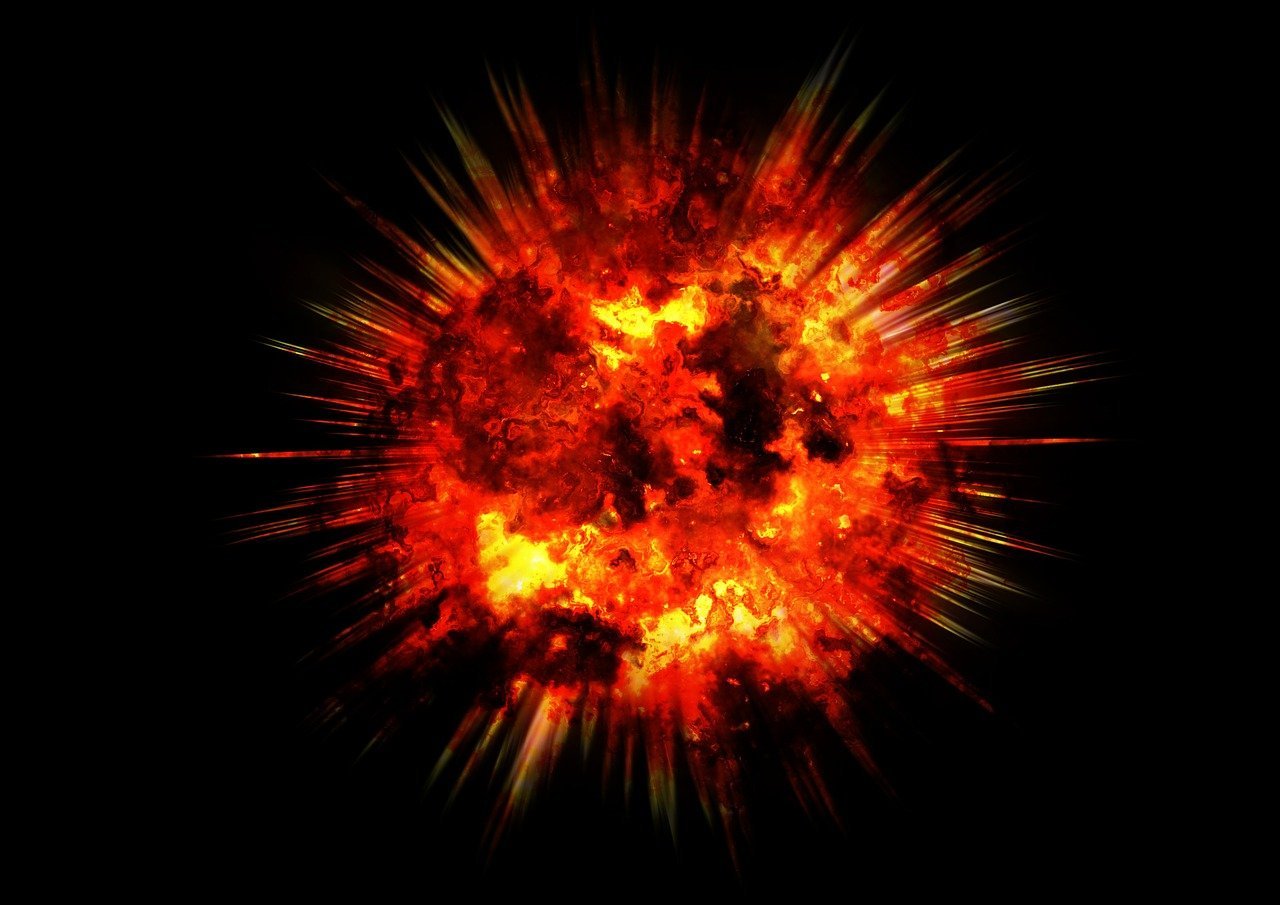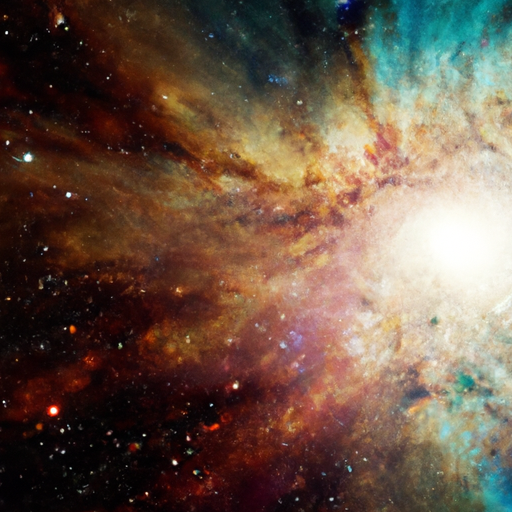In this fascinating article, we will explore the theoretical underpinnings of the Big Bang theory, delving into the contributions of brilliant minds like Albert Einstein and the concept of cosmic inflation. By examining these key ideas, we will gain a deeper understanding of the scientific theories that underlie our understanding of the origins and evolution of the universe. So, get ready to embark on an enlightening journey through the realms of astrophysics and cosmology.

Einstein’s Theory of General Relativity
Principles of General Relativity
Einstein’s Theory of General Relativity, published in 1915, revolutionized our understanding of gravity and the structure of the universe. The theory is based on the principle that the curvature of spacetime is determined by the distribution of matter and energy within it. This means that massive objects like stars and planets create curves in the fabric of space and time, causing objects to move along curved paths. In essence, gravity is not a force acting at a distance, but rather the result of the distortion of spacetime.
Predictions for the Universe
One of the key predictions of General Relativity was the notion that the universe is not static but expanding. In 1929, Edwin Hubble’s observations of distant galaxies supported this prediction, showing that galaxies are moving away from each other, like the spots on an inflating balloon. This discovery laid the foundation for the Big Bang theory, which posits that the universe began as an incredibly hot, dense, and small point known as a singularity.
Expansion and Cosmic Microwave Background
The concept of the expanding universe also led to the discovery of the Cosmic Microwave Background (CMB) radiation, which is considered one of the strongest pieces of evidence for the Big Bang. The CMB is the “afterglow” of the early universe, a faint radiation that permeates the entire cosmos. It is believed to be the remnants of the intense heat of the primordial fireball that occurred just 380,000 years after the Big Bang. The CMB provides valuable insights into the conditions of the early universe and supports the idea that the universe began with a hot and dense state.
Inflationary Cosmology
Introduction to Inflation
Inflation is a theory that was proposed in the early 1980s to address some of the problems in the standard Big Bang model. According to inflation theory, the universe went through a phase of rapid exponential expansion in the moments following the Big Bang. This inflationary period, lasting only a fraction of a second, is believed to have smoothed out the irregularities in the early universe and provided an explanation for why the universe appears so remarkably uniform on large scales.
The Inflationary Universe
The inflationary universe theory suggests that during the inflationary period, a tiny region of space expanded exponentially, doubling in size every tiny fraction of a second. This rapid expansion would have caused the universe to stretch far beyond the limits of what we can observe today, explaining why the observed universe appears so homogeneous and isotropic. Inflation also provides a mechanism for the formation of the large-scale structures, like galaxies and clusters of galaxies, that we see in the universe today.
Evidence for Inflation
While direct observational evidence for inflation remains elusive, there is substantial indirect evidence that supports the inflationary cosmology. One of the key predictions of inflation theory is the existence of minute quantum fluctuations in the early universe, which would lead to the formation of the large-scale structures we observe today. The spatial variations in the CMB radiation, known as the anisotropies, provide strong support for the inflationary model. The precise measurements of the CMB made by satellites, such as the Cosmic Background Explorer (COBE) and the Wilkinson Microwave Anisotropy Probe (WMAP), have confirmed the existence of these predicted fluctuations and their agreement with inflationary predictions.
Quantum Fluctuations and Cosmic Inflation
Quantum Mechanics in Cosmology
Quantum mechanics plays a crucial role in the study of cosmic inflation. According to quantum mechanics, the vacuum of empty space is not truly empty but is filled with a sea of virtual particles that constantly fluctuate in and out of existence. During inflation, these quantum fluctuations get stretched to cosmic scales, becoming the seeds of structure formation in the universe. This connection between quantum mechanics and inflation provides a deeper understanding of how the universe emerged from its initial state.
Inflationary Perturbations
Inflationary perturbations refer to the slight variations in the density of matter and energy in the early universe. These perturbations, originating from quantum fluctuations during inflation, are responsible for the formation of galaxies, clusters, and other cosmic structures. The detailed study of these perturbations can shed light on the nature of the inflationary mechanism itself and provide insights into the fundamental physics at energies much higher than those accessible in laboratory experiments.
Spatial Flatness and Horizon Problem
The concept of spatial flatness and the horizon problem are two key issues that inflation theory addresses. Spatial flatness refers to the idea that the overall geometry of the universe is flat, meaning that the angles of a triangle add up to 180 degrees, as in Euclidean geometry. Inflation explains this by proposing that the exponential expansion during the inflationary phase smoothed out any curvature, making the universe appear spatially flat.
The horizon problem, on the other hand, relates to the uniformity of the CMB radiation observed across the entire sky. According to the standard Big Bang model, regions of the sky that are currently separated by billions of light-years were never in causal contact, meaning they could not have interacted and reached a common temperature. Inflation resolves this problem by suggesting that these regions were once in close proximity, and the rapid expansion during inflation brought them into causal contact, allowing them to reach thermal equilibrium.
Singularity and the Singularity Theorems
The Big Bang Singularity
The Big Bang singularity refers to the initial state of the universe, a moment of extreme density and temperature from which the universe emerged. According to General Relativity, at the singularity, the laws of physics as we know them break down, and our understanding of the universe becomes uncertain. The singularity is a point of infinite curvature and represents the limit of our current knowledge about the universe’s beginnings.
The Singularity Theorems
The singularity theorems, derived from General Relativity, provide a framework for understanding the nature of singularities in the universe. These theorems show that under certain reasonable conditions, the existence of a singularity is an inevitable consequence of the equations of General Relativity. They imply that the universe must have had a cosmic beginning, as described by the Big Bang model, where an initial singularity marks the starting point of our universe’s evolution.
Implications for the Early Universe
The presence of a singularity in the early universe has profound implications for our understanding of the cosmos. It suggests that the laws of physics, as we currently understand them, break down at extremely high densities and temperatures. Exploring the nature of the singularity and developing a theory that can reconcile General Relativity with quantum mechanics is one of the most significant challenges in theoretical physics.

Cosmic Microwave Background Radiation
Discovery of CMB
The discovery of the Cosmic Microwave Background (CMB) radiation in 1965 was a major milestone in our understanding of the Big Bang. Arno Penzias and Robert Wilson accidentally stumbled upon this radiation while trying to measure the level of radio noise in their antenna. The CMB is a faint radio signal that pervades the entire universe and is an afterglow of the early moments of the Big Bang.
Importance for Big Bang Theory
The CMB is critical to the Big Bang theory as it provides valuable insights into the early universe. By studying the properties of the CMB, scientists can learn about the age, composition, and geometry of the universe. The CMB radiation is remarkably uniform, with tiny temperature fluctuations across the sky, which are believed to be the imprints of the quantum fluctuations that occurred during the inflationary period. These fluctuations eventually grew into the galaxies and structures we observe in the universe today.
Anisotropies and Inflationary Consistency
The anisotropies, or temperature fluctuations, observed in the CMB are of great interest to cosmologists. These fluctuations are the result of density variations in the early universe, which eventually grew under the influence of gravity to form galaxies and clusters. The detailed analysis of these anisotropies can provide important clues about the physics of the early universe.
Inflationary theory predicts the statistical properties of these fluctuations, such as their power spectrum, which describes the distribution of fluctuations at different scales. The measurements of the CMB made by satellites such as COBE and WMAP have provided strong confirmation of the inflationary predictions and established the consistency of the Big Bang theory within the framework of inflation.
The Role of Dark Energy in the Big Bang
Dark Energy and Expansion
Dark energy is a mysterious form of energy that is believed to be responsible for the accelerated expansion of the universe. In the standard Big Bang model, dark energy becomes dominant in the late stages of the universe’s evolution, driving its accelerated expansion. The exact nature of dark energy is still unknown, but it is believed to counteract the gravitational pull of matter, causing the expansion of the universe to accelerate.
Accelerated Expansion
The discovery of the accelerated expansion of the universe in the late 1990s was a major breakthrough and earned the Nobel Prize in Physics for three scientists. Observations of distant supernovae showed that the expansion of the universe was not slowing down due to gravitational attraction but rather accelerating. This unexpected result implied the presence of an unknown form of energy, later dubbed dark energy, which is driving this acceleration.
Cosmological Constant and Vacuum Energy
The simplest explanation for dark energy is a cosmological constant, first introduced by Albert Einstein himself. The cosmological constant represents a constant energy density that permeates all of space and has negative pressure, causing the expansion of the universe to accelerate. Another possible explanation for dark energy is vacuum energy, which refers to the energy associated with empty space. The exact nature of dark energy and its relation to the vacuum energy of quantum physics remain open questions in cosmology.

Primordial Nucleosynthesis
Formation of Light Elements
Primordial nucleosynthesis refers to the synthesis of light elements, such as hydrogen (H), helium (He), and lithium (Li), in the early universe. This process occurred during the first few minutes after the Big Bang when the temperature and density of the universe were high enough to allow nuclear reactions to take place. These nuclear reactions produced the light elements we observe in the universe today.
Conditions for Nucleosynthesis
Primordial nucleosynthesis requires specific conditions to occur. The temperature of the universe must be high enough to overcome the electrostatic repulsion between positively charged atomic nuclei. Additionally, the density of matter must be just right to allow sufficient interactions between particles. The precise calculations and predictions of primordial nucleosynthesis have been one of the successes of the Big Bang theory, as the observed abundances of light elements match the predictions based on these conditions.
Supportive Evidence for the Big Bang
The successful predictions and agreement between observed abundances of light elements and those predicted by the Big Bang model provide strong supportive evidence for the theory. The consistency between theory and observation lends credibility to the idea that the universe did go through a hot and dense phase known as the Big Bang. Primordial nucleosynthesis is one of the key pieces of evidence that supports our current understanding of the early universe.
Cosmological Constant and Dark Matter
Dark Matter’s Gravitational Effects
Dark matter is an invisible form of matter that does not interact with light or ordinary matter directly. Its presence, however, can be inferred from its gravitational effects on visible matter. Observations of the rotation of galaxies and the motion of galaxies within galaxy clusters suggest the existence of large amounts of dark matter that provide the additional gravitational pull needed to explain these observations.
Observational Evidence for Dark Matter
In addition to gravitational effects, there is other observational evidence for the existence of dark matter. Measurements of the CMB have shown that dark matter makes up a significant portion of the total matter content in the universe. Additionally, the bending of light around massive objects, known as gravitational lensing, provides additional evidence for the presence of dark matter.
Cosmological Constant and Acceleration
The cosmological constant, introduced by Einstein, could also play a role in the accelerated expansion of the universe. This constant can be interpreted as a form of dark energy, with negative pressure, which counteracts the gravitational pull of matter and drives the expansion to accelerate. The presence of both dark matter and dark energy, represented by the cosmological constant, raises intriguing questions about the composition and dynamics of the universe.

The Multiverse Hypothesis
Theoretical Foundation
The multiverse hypothesis is a theoretical concept that suggests the existence of multiple universes, each with different physical properties and laws of physics. This idea originates from theories such as inflation, where it is proposed that our universe is just one of many “bubbles” within a larger, ever-expanding multiverse. This concept arises from the mathematical calculations and predictions made by inflationary models.
Inflation and the Multiverse
Inflationary cosmology provides a framework for the multiverse hypothesis. According to inflation theory, the rapid expansion of the early universe created an infinite number of regions that are disconnected from each other. These regions eventually separate into distinct universes with different physical properties. Each universe within this multiverse would have its own set of physical laws and constants, leading to a vast array of possible universes.
Implications for Big Bang Cosmology
The multiverse hypothesis has far-reaching implications for our understanding of the Big Bang and the nature of our own universe. It suggests that our universe may not be unique but rather one of many possible outcomes of cosmic evolution. This concept raises profound questions about the nature of reality, the origin of the laws of physics, and the fundamental nature of existence itself. While the multiverse hypothesis remains speculative, it continues to drive research and exploration into the nature of our universe.
Testing the Big Bang Theory
Observational Tests
The Big Bang theory has undergone rigorous observational tests to validate its predictions and assumptions. One of the key tests is the measurement of the CMB radiation, which provides strong evidence for the early hot and dense state of the universe. Additionally, the abundance of light elements and the observations of distant supernovae have provided further confirmation of the theory.
CMB Measurements and Inflation
The precise measurements of the CMB made by satellites, such as COBE and WMAP, have been instrumental in testing the predictions of the inflationary cosmology. The fluctuations in the CMB radiation, as well as its temperature distribution, have been compared with the theoretical predictions of inflation, and the agreement has provided validation for the theory. The detailed analysis of the CMB has revealed subtle features that have further refined our understanding of the early universe.
Future Discoveries and Advancements
As our observational techniques and technology continue to advance, we can expect further discoveries and advancements in our understanding of the Big Bang theory. Future observations, such as those made by the upcoming James Webb Space Telescope, promise to provide even more detailed measurements of the CMB and other cosmological phenomena. These advancements will allow us to test the theory with greater precision and explore new frontiers of our understanding of the universe’s origins.